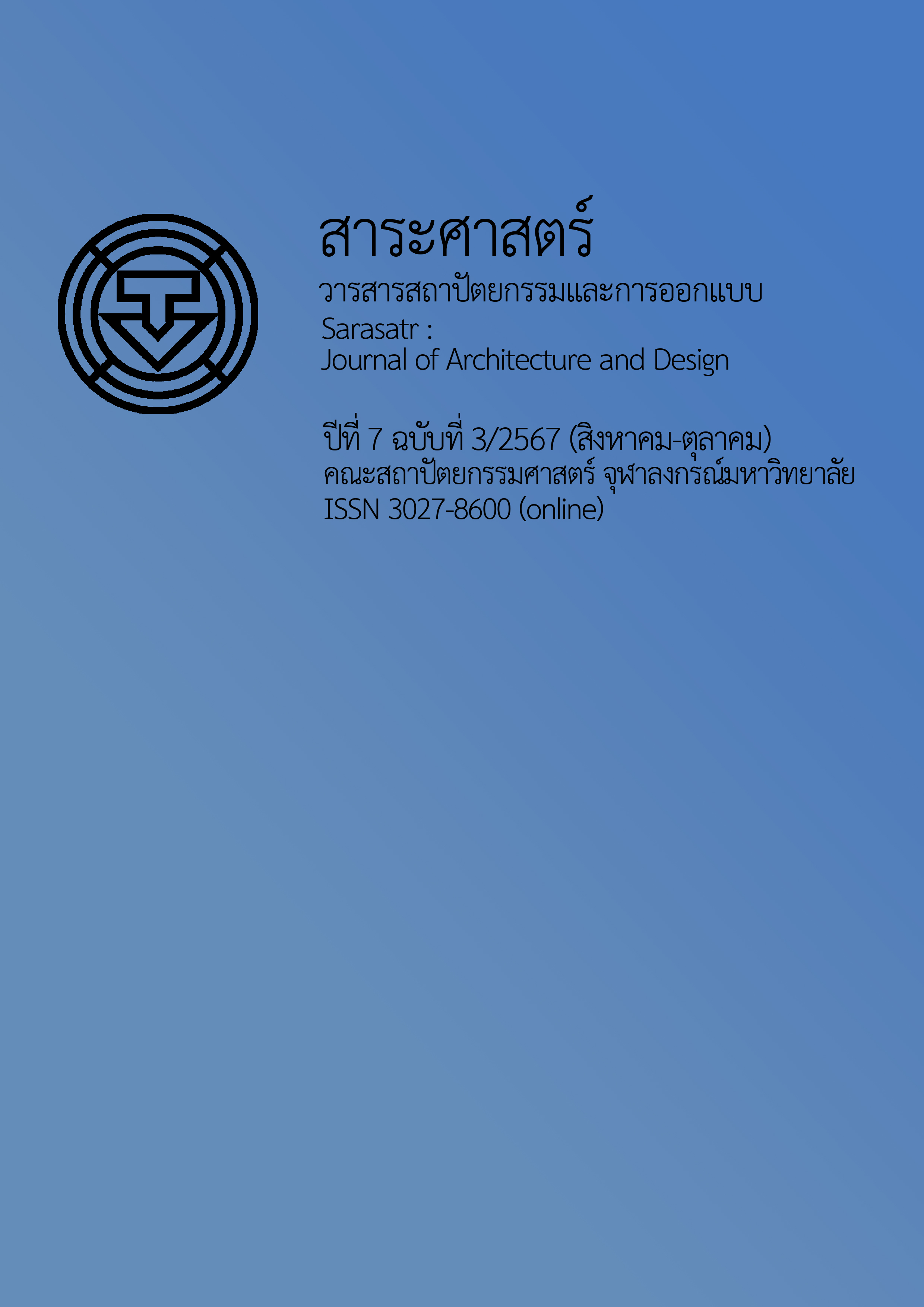Restoration and Improvement of Public Spaces for Recreation and Relaxation in Community Areas and Workplaces: A Case Study of the Coastal Area near Suchada Beach, Mueang District, Rayong Province
Main Article Content
Abstract
This research aims to understand the restoration and improvement of public spaces suitable for recreational and leisure activities of the community, focusing on the area around Suchada Beach in Mueang District, Rayong Province, which has potential for development and presents effective development guidelines for the sustainable use of public spaces in the community and helps improve the quality of life of the people in that area. The objectives are as follows: 1) to study the physical characteristics and current problems of the area. 2) to study the activities and amenities provided in the area. 3) to study the needs of the agencies responsible, community members, and service user groups in the area. 4) to propose suitable restoration and improvement guidelines for supporting recreational and leisure services. Data collection tools for the study included a field survey form to identify current problems, recreational activities, and facilities, an interview with relevant agencies to understand their plans, needs, and regulations affecting the situation being analyzed, and a questionnaire to survey opinions and gather information that will lead to conclusions for the rehabilitation and improvement of public spaces for recreation and relaxation. The sample group for this research consists of community members and service users who participate in recreational and leisure activities in the area, totaling 400 people. The statistical analysis used includes frequency, percentage, average, and inferential statistics to describe the data characteristics. The study found that the majority of the sample group engaged in recreational activities in the area (49%), followed by eating (29%) and shopping (11%). The main suggestions for facilities in the area from the sample group were to increase the number of public toilets (39%), followed by seating and benches (26%), and suggestions for greenery and shops/markets (9% each). The research suggests that collaboration among relevant organizations, communities, and the private sector greatly enhance the effectiveness of restoration and improvement efforts.
Article Details
References
กรมโยธาธิการและผังเมือง. (2547). แนวทางการออกแบบสวนสาธารณะ. กรม.
กระทรวงมหาดไทย. กรมส่งเสริมการปกครองท้องถิ่น. (2564). ข้อแนะนำการออกแบบบาทวิถีและสิ่งแวดล้อมเพื่อทุกคน. สมาคมสถาปนิกผังเมืองไทย.
เทศบาลตำบลเนินพระ. (2564). เส้นทางการท่องเที่ยว. เทศบาลตำบล.
ลงทุนแมน. (2562). ชลบุรี ระยอง จังหวัดที่มีรายได้ต่อหัวมากกว่ากรุงเทพฯ. https://www.longtunman.com/16237
ลงทุนแมน. (2563). ระยองมีความสำคัญต่อเศรษฐกิจไทยมากแค่ไหน. https://www.longtunman.com/24231
สำนักงานสภาพัฒนาการเศรษฐกิจและสังคมแห่งชาติ. (2561). ผลิตภัณฑ์ภาคและจังหวัดแบบปริมาณลูกโซ่. สำนักงาน.
Carmona, M., Heath, T., Oc, T., & Tiesdell, S. (2010). Public places, urban spaces: The dimensions of urban design. Routledge.
Crompton, J. L. (2001). The impact of parks on property values: A review of the empirical evidence. Journal of Leisure Research, 33(1), 3-25.
Godbey, G., Mowen, A. J., & Brymer, R. F. (2010). Outdoor recreation, health, and wellness: Understanding and enhancing the relationship. Resources for the Future.
Lee, K., & Scott, D. (2007). Understanding the role and impact of leisure in tourism provisioning: A comparative study of the USA and South Korea. Tourism Management, 28(2), 431-440.
Li, C. L., & Wang, C. Y. (2013, November). Recreation benefit, quality of life, and life satisfaction. Paper presented at the First International Conference on Emerging Research Paradigms in Business and Social Sciences. https://www.researchgate.net/publication/267906492
Loukaitou-Sideris, A. (2017). Public space. In K. McCartney (Ed.), International encyclopedia of housing and home (pp. 407-412). Elsevier.
Whyte, W. H. (1980). The social life of small urban spaces. Project for Public Spaces.


